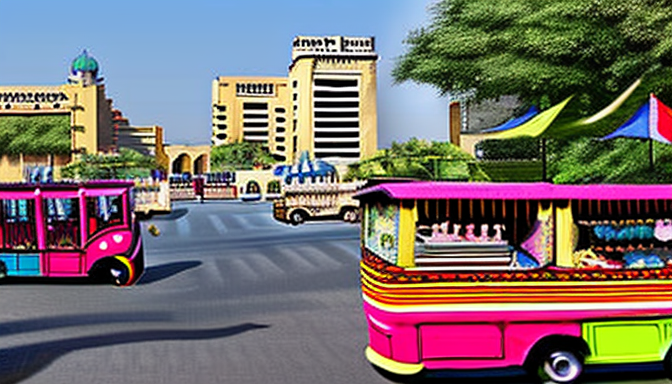Karachi’s story is like a vivid tapestry, woven with threads of history and culture. Imagine a small fishing village, where the sun rises over the shimmering waters of the Arabian Sea. Fast forward to today, and you see a bustling metropolis filled with life, energy, and diversity. It’s fascinating to think about how this city transformed over the years. Vintage photographs and historical maps tell a tale that words alone cannot capture.
In the early days, Karachi was a modest port town. It had its share of charm, with fishermen casting their nets and traders exchanging goods. But as time marched on, the city began to grow. The British colonial era brought significant changes. New roads, railways, and buildings sprang up. These developments laid the foundation for what Karachi would become. The hustle and bustle of the market streets, the architectural wonders, and the vibrant neighborhoods all emerged during this transformative period.
As we explore this visual journey, we can see key milestones that defined Karachi’s identity. From the construction of the iconic Frere Hall to the establishment of the Karachi Port Trust, each landmark tells a story. Each photograph captures a moment in time, reminding us of the city’s resilience and adaptability. Karachi is not just a city; it’s a living history book. So, let’s dive into these visuals and celebrate the evolution of this incredible metropolis!
Historical Milestones
Karachi’s story is like a colorful tapestry, woven with threads of history and culture. Once just a small fishing village, it has transformed into a bustling metropolis. This evolution is not just about buildings and roads; it’s about the people and their stories. Let’s take a visual journey through time, exploring key milestones that shaped this vibrant city.
In the early 18th century, Karachi was a modest port town. It was primarily known for its fishing and trade. But then came the British. Their arrival marked a turning point. The city began to grow rapidly. By the late 19th century, Karachi had become a crucial trade hub. This was when the first railway line connected it to the rest of the country. Imagine the excitement of seeing goods arrive from far-off lands!
As we delve deeper into the 20th century, Karachi witnessed significant changes. The partition of India in 1947 brought a massive influx of refugees. This event reshaped the city’s demographic landscape. New cultures blended, creating a unique social fabric. The vintage photographs from this era capture the hustle and bustle, the hope and despair of the people.
To truly appreciate Karachi’s transformation, we can look at a few important milestones:
- 1839: British occupation begins.
- 1947: Partition leads to a population surge.
- 1970s: Industrial growth and urban expansion.
- 2000s: Modernization and globalization.
These milestones are more than just dates. They represent the spirit of resilience and adaptability. Karachi continues to evolve, embracing its past while looking forward to the future.

Cultural Shifts and Influences
Karachi is a melting pot of cultures, and its journey is nothing short of fascinating. Imagine a city that started as a small fishing village, now pulsating with life and diversity. The cultural tapestry of Karachi is woven from threads of various influences, each adding its unique hue. From the colonial era to modern times, every phase has left a mark. Can you picture the bustling streets filled with vendors, the aroma of spices wafting through the air, and the sounds of different languages blending into a beautiful symphony?
Historical events played a pivotal role in shaping Karachi’s identity. The British colonial period introduced new architectural styles and governance, which can still be seen in the city’s buildings today. The influx of migrants from different regions brought new traditions and lifestyles. For instance, the Partition of 1947 was a significant turning point. It transformed Karachi into a refuge for millions, leading to a surge in cultural diversity.
Today, Karachi stands as a testament to resilience and adaptability. The city embraces its past while looking forward. Festivals celebrating various cultures, art exhibitions, and food fairs highlight this vibrant blend. The visual journey through vintage photographs and historical maps reveals a city that has constantly evolved. Each picture tells a story, capturing the essence of Karachi’s rich heritage. So, next time you wander through its streets, remember that every corner holds a piece of history.
Frequently Asked Questions
- What is the historical significance of Karachi?
Karachi has a rich history that dates back to its origins as a small fishing village. Over the years, it has transformed into a bustling metropolis, marked by key events like its establishment as a major port during British colonial rule, which significantly influenced its growth and infrastructure.
- How have cultural influences shaped Karachi?
The cultural fabric of Karachi is woven from various influences, including colonial legacies, migration patterns, and contemporary trends. This diversity is reflected in the city’s art, cuisine, and festivals, making it a vibrant melting pot of traditions and modernity.
- What are some key milestones in Karachi’s development?
Some notable milestones include the establishment of the Karachi Port in the 19th century, the development of industrial zones in the 20th century, and the rapid urbanization that has occurred in recent decades, all of which have played a crucial role in defining the city’s identity.
- Why is Karachi considered a cultural hub?
Karachi is often referred to as a cultural hub due to its diverse population and the myriad of cultural expressions found throughout the city. From its literature and music to its vibrant street art, Karachi showcases a blend of traditional and modern influences that continue to evolve.